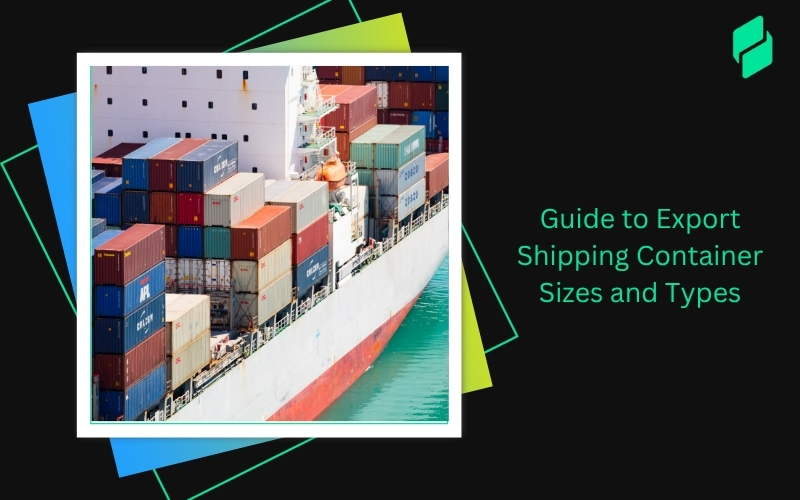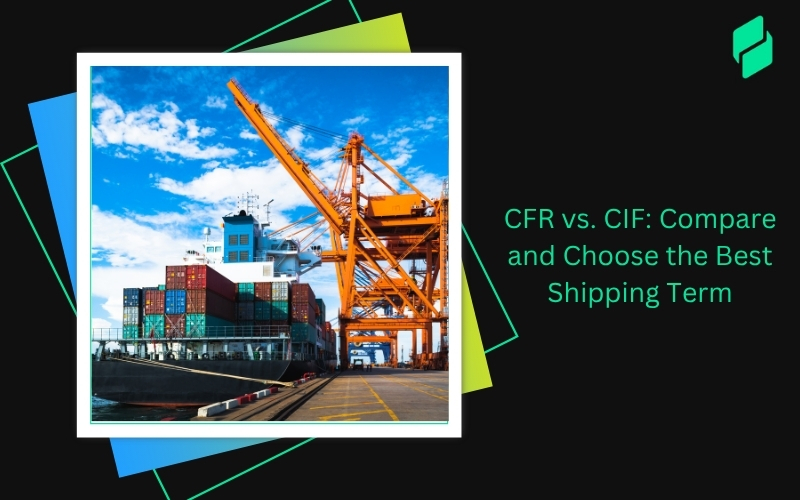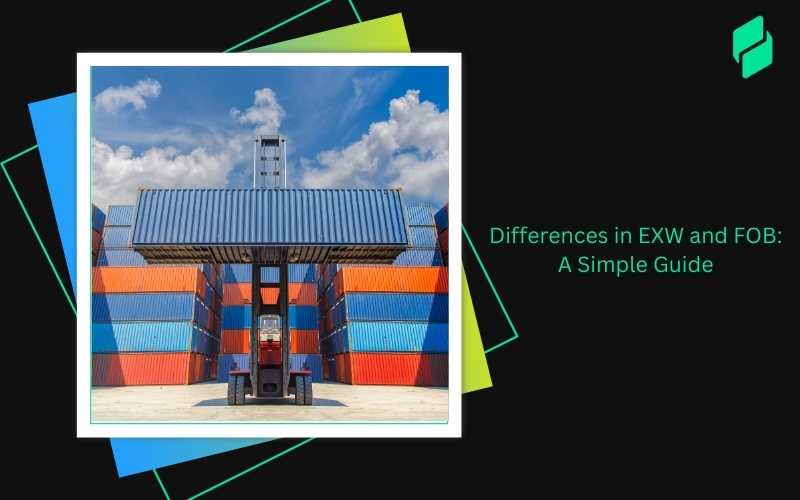Optimize your business: use unlimited savings with Pazago fulfilled now!
Get Started ->Shipping goods internationally involves numerous risks, from natural disasters to theft, which makes marine cargo insurance essential for protecting assets. However, understanding the marine cargo insurance premium—how it is calculated and the factors that influence it—is critical for businesses aiming to optimize costs.
This guide will dive deeper into the factors affecting premiums, practical industry examples, and real-world scenarios.
What is Marine Cargo Insurance?
Marine cargo insurance is a specialised policy that protects goods during transit by sea, air, or land. It covers various risks such as theft, accidents, fire, and natural disasters that may occur during the journey.
Importance of Marine Cargo Insurance
- Financial Security: Ensures businesses don’t incur massive losses from damaged or lost cargo during transit.
- Compliance and Trust: Many countries require marine insurance as part of regulatory compliance, especially for international shipments.
- Risk Management: For industries dealing with high-value or fragile goods, insurance helps reduce risk exposure during transportation.
Types of Marine Insurance Policies
There are multiple types of marine insurance policies, each catering to different business needs and cargo types. Understanding the options helps businesses choose the best coverage for their goods.
Also Read: Understanding the Basis of Valuation in Marine Cargo Insurance
Factors Influencing Marine Cargo Insurance Premiums
Several factors affect the marine cargo insurance premium, which businesses must consider to optimise their costs effectively.
1. Type of Coverage
- Comprehensive coverage: Policies that provide all-risk protection will have higher premiums than limited or specific-peril coverage. For instance, a policy covering "all risks" for delicate cargo like electronics will have a higher premium than one covering only "named perils."
2. Natural Disasters and Geographic Risks
- Expect higher premiums if your goods pass through high-risk areas, such as regions prone to cyclones, hurricanes, or earthquakes. Shipping goods through less risky, well-established routes reduces costs.
3. Vessel Type, Condition, and Age
- Newer ships: Vessels with the latest safety technology tend to have lower premiums.
- Older vessels: Older ships typically attract higher premiums due to wear and tear and a higher likelihood of mechanical failures.
4. Vessel’s Nationality and Crew Expertise
- Experienced crews from countries with a robust maritime tradition generally reduce the insurer's perceived risk, leading to lower premiums. On the other hand, using vessels with inexperienced crews or those from regions with a lower track record in maritime operations could increase premium costs.
5. Shipping Route
- Shipping through high-risk zones such as areas prone to piracy (e.g., the Horn of Africa) or politically unstable regions will result in higher premiums. Choosing safer routes that minimise exposure to these risks can help reduce costs.
6. Nature and Value of Cargo
- Goods that are fragile, perishable, or high in value (e.g., electronics, art, or luxury items) attract higher premiums because of the greater likelihood of damage or theft. Bulkier, more durable goods (e.g., machinery or steel) generally have lower premiums.
How Marine Cargo Insurance Premium is Calculated
The marine cargo insurance premium calculation follows a set formula based on the shipment value, escalation costs, and insurance rate. Let’s break this down step by step.
Step 1 - Determine the Shipment Value
- Calculate the total value of your goods, including the cost of the goods themselves, freight charges, and any associated shipping costs.
Example Calculation:
Step 2 - Add Escalation Costs
- An additional percentage (usually 10%) is added to account for possible increases in the value of the goods during transit.
Escalation Example:
Step 3 - Multiply by Insurance Percentage
- The insurer will provide a percentage rate based on factors like the route, type of cargo, and risk assessment. The insured value is multiplied by this rate to determine the premium.
Premium Calculation Example:
By understanding these steps, businesses can better estimate their premium costs and make informed decisions.
Also Read: Claim Process and Required Documents in Marine Insurance
Real-World Examples of Premium Variations
Different industries face varying premium costs for marine cargo insurance based on factors like the nature of the goods, transportation methods, and shipping routes. Below are two detailed examples illustrating how these factors influence premiums across different industries.
Perishables Industry Example
A company shipping perishable goods, such as fresh fruits and vegetables, from India to Europe would typically encounter higher insurance premiums. Here's why:
Perishability: Perishable goods like fruits and vegetables are susceptible to delays, temperature changes, and mishandling. Even a minor disruption during transit, such as a delay at a port, can spoil an entire shipment.
To mitigate this risk, insurance premiums for perishable goods are higher to account for the potential losses due to spoilage or deterioration.
Shipping Method: Perishable goods often require specialised transportation, such as refrigerated containers (also known as reefer containers), to maintain the optimal temperature throughout the journey.
Refrigerated containers increase shipping and insurance costs, as the risk of technical failure in temperature control systems must also be covered.
Fast Delivery Requirement: Given the short shelf life of perishable goods, air freight is often used for international shipments.
While air freight reduces transit time and the likelihood of spoilage, it also increases the overall shipping cost, elevating the marine cargo insurance premium due to the higher value and urgency associated with air transport.
Shipping Route Risks: Shipping fresh produce through certain regions, especially those prone to weather disruptions or port delays, can increase premiums.
For example, the route from India to Europe may involve transiting through regions with higher risks of delays or political unrest, which can elevate insurance premiums.
In summary, businesses shipping perishables face elevated premiums because of the higher risks associated with cargo deterioration, specialised transportation requirements, and the use of faster (and more expensive) delivery methods like air freight.
Heavy Machinery Export Example
An exporter of durable goods, such as construction machinery, from India to the Middle East will generally face lower marine cargo insurance premiums. Here’s why:
The durability of Cargo: Heavy machinery, such as construction equipment, is designed to withstand tough conditions, which makes it far less susceptible to damage compared to fragile or perishable goods.
The robust nature of these products means the risk of in-transit damage is lower, resulting in more favourable insurance premiums. Moreover, machinery is typically well-packed in crates or containers, providing further protection during shipment.
Shipping Route: The route from India to the Middle East generally passes through relatively stable and secure waters. The lower risk of piracy and political unrest along these shipping lanes than in regions like the Horn of Africa helps keep insurance premiums down.
Furthermore, established trade routes between India and the Middle East often benefit from streamlined customs processes, reducing the chances of delays or complications.
Shipping Method: Bulk sea freight is typically the preferred mode of transport for heavy machinery due to its cost efficiency and the ability to move large volumes simultaneously.
Sea freight is far more economical than air freight for non-perishable, durable goods. Since the goods are transported in bulk and are not time-sensitive, the lower costs of sea transport contribute to lower insurance premiums.
Lower Vulnerability to External Factors: Machinery is generally less affected by external factors like minor temperature changes or port delays. Even if the shipment is delayed, the product quality remains intact, unlike perishables, which degrade over time.
This reduced vulnerability translates into lower risks for the insurer and, thus, lower premiums.
In this case, businesses shipping heavy machinery benefit from lower marine cargo insurance premiums due to the cargo's lower risk profile, safer shipping routes, and more economical modes of transport.
Open Marine Insurance Policy
An Open Marine Insurance Policy offers continuous coverage for businesses engaged in regular shipping without arranging separate policies for each shipment.
Advantages of Open Marine Insurance Policy
An Open Marine Insurance Policy provides various benefits for businesses engaged in regular shipping. Here are the key advantages:
- Continuous Coverage: With an open policy, you get continuous coverage for all shipments within the policy period (usually one year). This means you don’t have to arrange a separate policy for each consignment - reducing administrative work and ensuring uninterrupted protection.
- Cost Efficiency: Open policies typically offer better rates than individual shipment policies. Bundling multiple shipments into a single policy spreads the premium, allowing businesses to save on insurance costs over time.
- Flexibility: This type of policy is flexible and can be adjusted based on the shipping volume. If you increase or decrease the number of shipments during the policy period, the premium can be modified accordingly, ensuring you only pay for what you need.
- Simplified Process: Since you don’t take out separate policies for every shipment, the paperwork and approval processes are significantly streamlined. This can save you valuable time, especially if you're shipping frequently.
- Improved Cash Flow: Open policies often offer flexible billing options. Businesses can arrange regular premium payments instead of paying upfront for each shipment, improving cash flow management.
- Risk Management: Open policies are tailored to cover a broad spectrum of risks, making it easier for businesses to manage the complexities of international shipping. Whether it’s varying routes, cargo types, or transit methods, this policy adapts to diverse scenarios.
How to Reduce Marine Cargo Insurance Premiums
There are several strategies businesses can adopt to reduce the marine cargo insurance premium while still maintaining sufficient coverage.
Step 1: Implement Safety Measures
- Ensure goods are securely packed and use vessels equipped with modern safety technology. This reduces perceived risk and may result in lower premiums.
Step 2: Opt for Higher Deductibles
- Choosing a higher deductible can lower your upfront premium. However, be prepared to cover more costs out-of-pocket in the event of a claim.
Step 3: Use Safer Routes
- Avoid shipping through risky areas prone to piracy or political instability. Insurance premiums are lower for routes that minimise these dangers.
Step 4: Maintain a Clean Claims History
- A good track record with minimal or no claims can lead to better premiums. Insurance providers often offer discounts to businesses with a clean claims history.
Step 5: Consult Experienced Brokers
- An insurance broker can help you navigate policy options and find ways to reduce premiums based on your specific shipping needs.
Also Read: Comprehensive Guide On Marine Insurance: Clause, Coverage
Choosing the Right Marine Insurance Policy
Selecting the right marine insurance policy is critical for balancing cost with coverage. Several factors affect the marine cargo insurance premium, so businesses must carefully choose the right policy based on their needs and risks.
Cargo Type and Value
The type and value of your cargo significantly influence the kind of policy you should choose. High-value items like electronics, luxury goods, or fragile cargo (such as glassware or artwork) require comprehensive coverage to mitigate the risks of theft, damage, or accidents. These goods are more vulnerable to mishandling or damage during transport, which justifies the need for broader protection.
On the other hand, durable and less expensive goods, such as bulk machinery or raw materials, may only require basic protection. These items are less prone to damage and often ship in bulk, which reduces the need for extensive coverage. Tailoring your policy based on cargo value ensures that you're not overpaying for unnecessary protection.
Flexible Policy Options
Choosing the right type of policy is equally important. Depending on how frequently you ship goods and the nature of your cargo, different options may be more suitable:
- Open Policy: This policy is best suited for businesses that ship regularly. It covers all shipments within a set period, usually one year, and eliminates the need to arrange separate coverage for each shipment. It's convenient for high-volume shippers and offers continuous protection.
- Time Policy: This policy covers the vessel or cargo for a specific duration. It's generally used by businesses with ongoing shipments within a set timeframe. It's beneficial for those who ship seasonally or have extended shipping operations.
- Specific Voyage Policy: Ideal for businesses that make occasional shipments. This policy covers a single journey from the point of origin to the final destination. It’s most cost-effective for companies that ship infrequently or for one-time shipments of high-value goods.
Assessing your shipping frequency and the type of goods being transported can help you choose the best coverage and cost policy.
Work with Brokers
Insurance brokers play a vital role in helping businesses navigate the complexities of marine insurance. Working with a broker allows you to evaluate multiple policy options and compare premiums across insurers. Brokers often have access to market insights that aren't readily available to the general public, allowing them to negotiate better rates and terms on your behalf.
Additionally, brokers can help you tailor your policy to fit your specific needs, ensuring that you're not overinsured (leading to higher premiums) or underinsured (leading to potential losses). They provide a balanced approach to securing the most appropriate coverage while keeping your marine cargo insurance premium within a reasonable range.
By consulting an experienced broker, you can make more informed decisions and secure cost-effective and comprehensive policies.
Also Read: Exploring Different Types of Marine Insurance Clauses
Conclusion
A thorough understanding of the factors affecting marine cargo insurance premiums is crucial for businesses to effectively manage their shipping costs while ensuring adequate coverage. Factors such as the type and value of the cargo, the chosen insurance coverage, the shipping route, and the carrier's safety record all play a significant role in determining insurance premiums. To calculate premiums accurately, businesses need to carefully assess these factors and work with experienced insurance professionals to tailor their coverage to their specific needs.
Additionally, practical tips to reduce premiums may include implementing risk management strategies, utilising secure packaging and handling procedures, and considering alternative shipping routes or methods. By taking these steps, businesses can effectively safeguard their goods in transit without overspending on insurance premiums.
Why Trust Pazago for Your Global Trade Operations?
Global trade isn’t just about moving goods from A to B - it’s about ensuring every step is smooth, efficient, and cost-effective! 🌍 With operations in over 110 countries, Pazago takes the hassle out of managing imports and exports. From handling logistics and customs paperwork to making international payments a breeze, Pazago helps you cut operational costs by 20% and reduce delays by 50%. 📉

Ready to revolutionise your trade game? Let’s break down how Pazago simplifies your global operations.
Centralised Visibility and Real-Time Tracking
Say goodbye to juggling multiple shipping sites. With Pazago Visibility, you can track your shipments in real time across 180+ shipping lines from 110+ countries 🌐.
Efficient Trade Document Management
Paperwork slowing you down? Pazago Documents digitises the entire process, allowing you to create, manage, and collaborate on crucial trade documents—from quotations to certificates of origin 📑💼.
Seamless Communication with Pazago Inbox
Tired of emails getting lost in translation? With Pazago Inbox, all your trade communications are centralised into one easy-to-navigate platform 💬📲.
Comprehensive Trade Management with Pazago Trade
Leave behind messy spreadsheets and endless email chains. Pazago Trade helps you manage the entire trade process - from purchase orders to delivery 📈📦.
Get real-time notifications, automated reminders, and risk mitigation tools that help you identify and fix potential delays or bottlenecks before they become costly problems.
Why Choose Pazago?
Why settle for complicated processes when Pazago offers a simple, digital solution? 🛠️ Whether managing high-value goods or navigating complex supply chains, Pazago brings clarity, efficiency, and control to your trade operations.
Ready to optimise your import-export operations? Explore Pazago and take the next step in transforming your business today!
📱 Download Our Mobile App:
Take control of your trade operations on the go! 🌟 With the Pazago mobile app, you can track shipments, manage documents, and handle payments - all from your phone.
Download on the Apple App Store
Follow Us on Social Media!
Stay ahead with the latest updates, news, and tips from Pazago! 🚀📊


.png)








